Connect With Us
Blogs
vendor
Dr. Mariam Botros Featured In Article by the Wound Care Education Institute
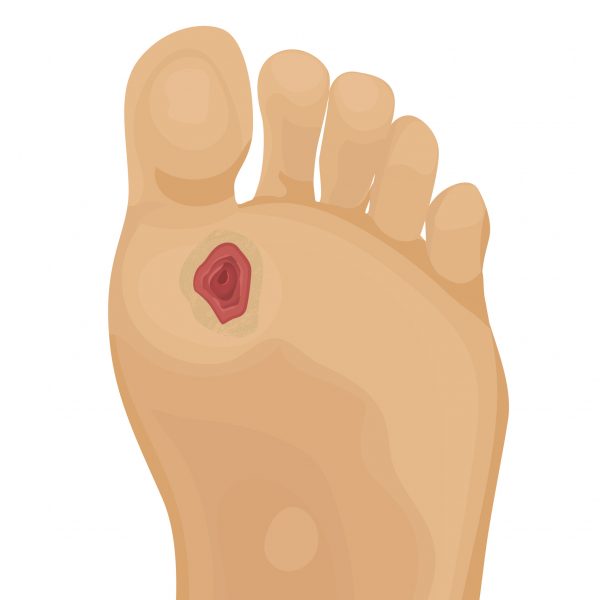
There are several diabetic wound classification systems. But how do you choose which one to use? Answering this question and more is our very own Dr. Mariam Botros. Dr. Botros recent spoke with Carole Jakucs, MSN, RN, PHN, CDCES from the Wound Care Education Institute and was featured in their blog article.
Dr. Botros described her use of the UT system in her daily practice after having studied under Lawrence B. Harkless, DPM, one of the creators of the UT Diabetic Wound Classification System.
“It’s important for clinicians to back up their thought process regarding what they found during the physical exam and determine the progression or regression of a wound or wounds,” said Botros.
To read the full article, please visit the Wound Care Education Institute website.
Stem Cell Injections for Achilles Injuries and Plantar Fasciitis

The Amniotic Fluid Allograft is a new treatment at Advanced Foot & Ankle Center that involves Stem Cell Injections for Achilles Injuries and Stem Cell Injections for Plantar Fasciitis.
An amniotic fluid allograft is a breakthrough treatment that alleviates pain and provides healing without surgery, general anesthesia, hospital stays, prolonged recovery time, or prolonged downtime from everyday life.
Foot and ankle injuries such as Achilles tendonitis, plantar fasciitis, joint pain, cartilage damage, ankle pain, and toe pain can be treated with amniotic fluid injections.
What is an Amniotic Fluid Allograft?
This natural regenerative medicine treatment is derived completely from 100% amniotic fluid that is derived from a living, healthy donor. In addition to containing naturally occurring growth factors, this fluid can also greatly aid in the healing of stubborn injuries or pain.
Human cells or tissues that have been damaged by age, disease, or trauma can be replaced by amniotic fluid injections since it contains growth factors that boost the regenerative process.
This procedure offers incredible benefits because of:
- Over 200 growth factors are included in the Amniotic Fluid Allograft, including collagen, protein, cytokines (inflammation modulators), nutrients, and hyaluronic acid (which is of vital importance for normal joint lubrication).
- It contains hyaluronic acid, which lubricates cartilage and promotes it to grow
- While it contains anti-inflammatory properties, it contains no steroids.
- These injections are based on naturally occurring anti-inflammatory agents, such as cytokines, which are small proteins released by cells that affect interactions between cells, communication between cells, or behaviors between cells
- It poses no risk of rejection by patients
It Poses No Risk of Rejection by Patients
Compared to stem cell therapy, amniotic fluid injections are considered safe, virtually painless, and noncontroversial by the FDA since 2003. This is because the amniotic fluid comes from healthy Caesarean section deliveries rather than blood cord donation, embryonic cells, or by removing any of your own blood or bone marrow to harvest stem cells required for stem cell therapy.
Though they do not contain live, viable stem cells, amniotic allograft injections include factors that come from stem cells. As a result, the effects are like stem cell injections, but we do not have to harvest stem cells from our patients.
What Conditions Can be Treated with Injections of Amniotic Fluid?
Due to the properties of Amniotic fluid, UFAI has successfully used amniotic fluid injections for foot pain to treat:
- Chronic pain relief
- Diabetic wounds
- Achilles tendon injuries
- Tendonitis, ligaments, and other soft tissue damage
- Tissue regeneration
- Ankle arthritis
- Osteoarthritis
- Inflammation control due to its anti-inflammatory properties (instead of using cortisone)
- Plantar fasciitis
- Tendinitis
- Joint injuries, including damage to the cartilage
- Toe pain
- Bursitis
- Sports injuries and sports medicine care
- Ankle pain
Stem Cell Injections for Achilles Injuries and Plantar Fasciitis Safe?
- Definitely. Since 2003, the FDA has regulated amniotic tissue products for their therapeutic applications in the health industry. To ensure maximum safety, amniotic fluid is sterilized using gamma radiation. It is tested according to the strictest federal guidelines to eliminate the possibility of communicable diseases. It also does not contain umbilical cord blood or embryonic stem cells. There is also almost no risk of side effects or allergic reactions in patients. As a result of the absence of antigens in amniotic fluid, side effects have been extremely rare.
There has been extensive research conducted in these areas, they have been found to be extremely effective treatments for the right patients and conditions.
How Many Treatments Will Be Needed?
Within four weeks of the initial injection, most patients experience physical changes and relief. After a single treatment, many patients with pain, inflammation, or degenerative diseases report significant improvement.
Do Stem Cell Injections for Achilles Injuries and Plantar Fasciitis Work for Everyone?
The right treatment for each foot or ankle is unique since each foot or ankle is unique. Several factors can affect a patient’s healing potential, so not everyone is a good candidate for amniotic fluid injection. At Advanced Foot & Ankle Center, Dr. Pedram Aslmand will be able to speak to you about all your options and whether stem cell injections would be the right treatment choice for you.
To determine whether amniotic fluid injections would be beneficial to you, you should see your doctor who will examine you, take a comprehensive medical history, and, if necessary, perform imaging studies.
We encourage you to schedule a consultation with one of our foot and ankle specialists call (562) 426-0376 to schedule an appointment.
5 Tips for Your Running Routine

It seems like everyone is “on the run” these days as they want to get in better shape and stay healthy. If you want to be part of the running revolution, or if you are a seasoned runner who is stuck in a rut, you may enjoy your run more if you incorporate these running tips into your daily routine.
Utilize These Running Routine Tips
Listen to Your Body
We are a tech savvy society, and runners are no different. While we are busy logging the right number of miles or the right speed for our prescribed running plan, we may be listening too much to our technology and too little to our body. A better plan is to pay attention to your body. If you are feeling fatigued the day after a long run, its okay to cut a mile or two off your route. If you are feeling great, then take advantage of that energy. When we don’t listen to our bodies, we are far more likely to invite an injury.
Avoid Bouncing
Bouncing wastes precious energy in the wrong direction. Your focus should be on moving forward, not up and down. In addition, the higher you bounce the more impact you put on your joints with each foot strike. Try to keep your feet near the ground and minimize the bounce. Keeping your arms relaxed and bent at the elbow near your side will also help. Sometimes bouncing results from taking a long stride. Elite runners tend to use shorter strides, minimizing the bounce which helps them run more and stay within their running routine
Increase Turnover Rate
If you take a shorter stride, how are you going to improve your speed? The answer lies in your turnover rate. Elite runners measure their cadence by counting how many times their left foot hits the ground in one minute. When you double this number, you have your turnover rate. Not only will a higher turnover rate get you to the finish line faster, it will also minimize the dreaded bounce.
Don’t Obsess over Your Foot Strike
The debate about which foot strike is best rages on, and a decisive conclusion has not yet surfaced. The heel strike puts a break on your speed, but it is easiest on the calf muscles. The mid-foot strike protects the foot from injury since the strike is distributed over the entire foot rather than the toes or the heel. However, the mid-strike is the slowest option. Toe strikes provide the best cushioning, saving your hip and knee joints. However, the toe strike also puts the most pressure on calf muscles, which could tire you prematurely.
Improve Your Posture
Poor posture can lead to injury. Good posture not only gives you greater lung capacity, but it also aligns your shoulders, hips, and arms in a natural, more injury-free position. Remember to look ahead of you rather than at the ground. And breathe in through your nose and out through your mouth. This action automatically improves posture.
Running is basically simple: lace up your shoes and head outdoors. However, with a few tweaks, even this simplest of exercises can become more efficient, easier on your body, all of which will make your running routine more fun!
Should I See A Podiatrist for Fallen Arches?
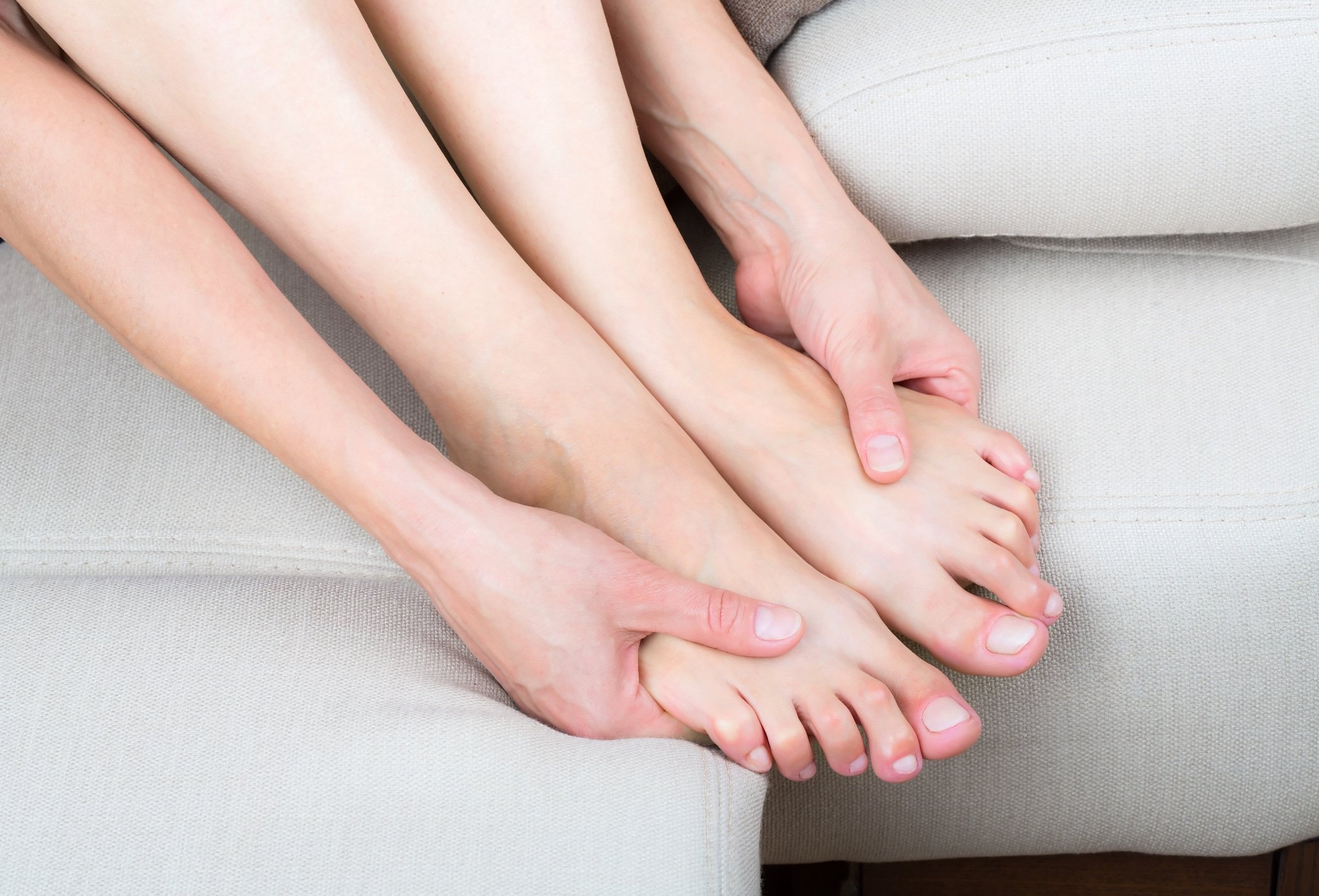
Who Develops Fallen Arches In the Feet?
It is important to visit a podiatrist for fallen arches to avoid additional problems in your feet and ankles. Fallen arches can also affect the total alignment of your body, leading to discomfort in the legs, hips or spine. This condition typically occurs in adults who have a lot of wear and tear in the joints, muscles and tendons of the feet. In addition, if you have inflammation in your foot from another condition, then it can affect the tendon that supports the sole of your foot. A fallen arch might occur in one or both of your feet, and it is not a congenital condition that is present from birth.
What Are the Symptoms from Having Fallen Arches In One or Both Feet?
The painful symptoms from a fallen arch will make daily mobility difficult, so it is vital to seek treatment as soon as possible. Some of the signs from this condition include:
- Pain in the heel while standing or walking
- Swelling in the feet from inflammation
- Discomfort in the sole of the foot from walking or standing
- Inability to flex a foot or stand on your toes
- Difficulty wearing certain types of shoes
- Pain that radiates to the ankles, knees or hips
In addition to chronic pain from a fallen arch, the problem will alter the alignment of your body. By having an examination from a podiatrist for fallen arches, you can begin the appropriate therapy right way to protect your body’s other joints, muscles and bones.
How Can a Podiatrist Help You With Your Fallen Arches?
When you visit a podiatrist’s office, you will undergo a complete examination, and the physician will collect medical images to see the bones or other parts of the feet. There are physical therapy treatments along with special exercises that can reduce the discomfort in your feet. To relieve pain in the feet, you can apply heating pads or use ice packs. There are also portable footbaths that you can use at home that will whirl warm water that can help you have less pain in your feet.
Using Customized Orthotics for Your Feet Is Imperative
The most important aspect of visiting a podiatrist for fallen arches is that you can order customized heel pads or arch supports that are made for each foot. If you have pain in your heels, then a heel pad with a hole in it can relieve your discomfort. In some cases, you will have less pain from wearing an elastic brace on a foot. It is essential to wear high-quality footwear that has a flatter sole with firm support. With the right type of shoes, you can transfer your customized orthotics from one type of footwear to another. In most cases, you must use multiple treatment methods to help your feet feel better along with preventing additional damage to your feet and body. Call Advanced Foot and Ankle Center today to schedule an appointment with Dr. Pedram Aslmand.
What To Do About Painful Blisters On Your Feet?
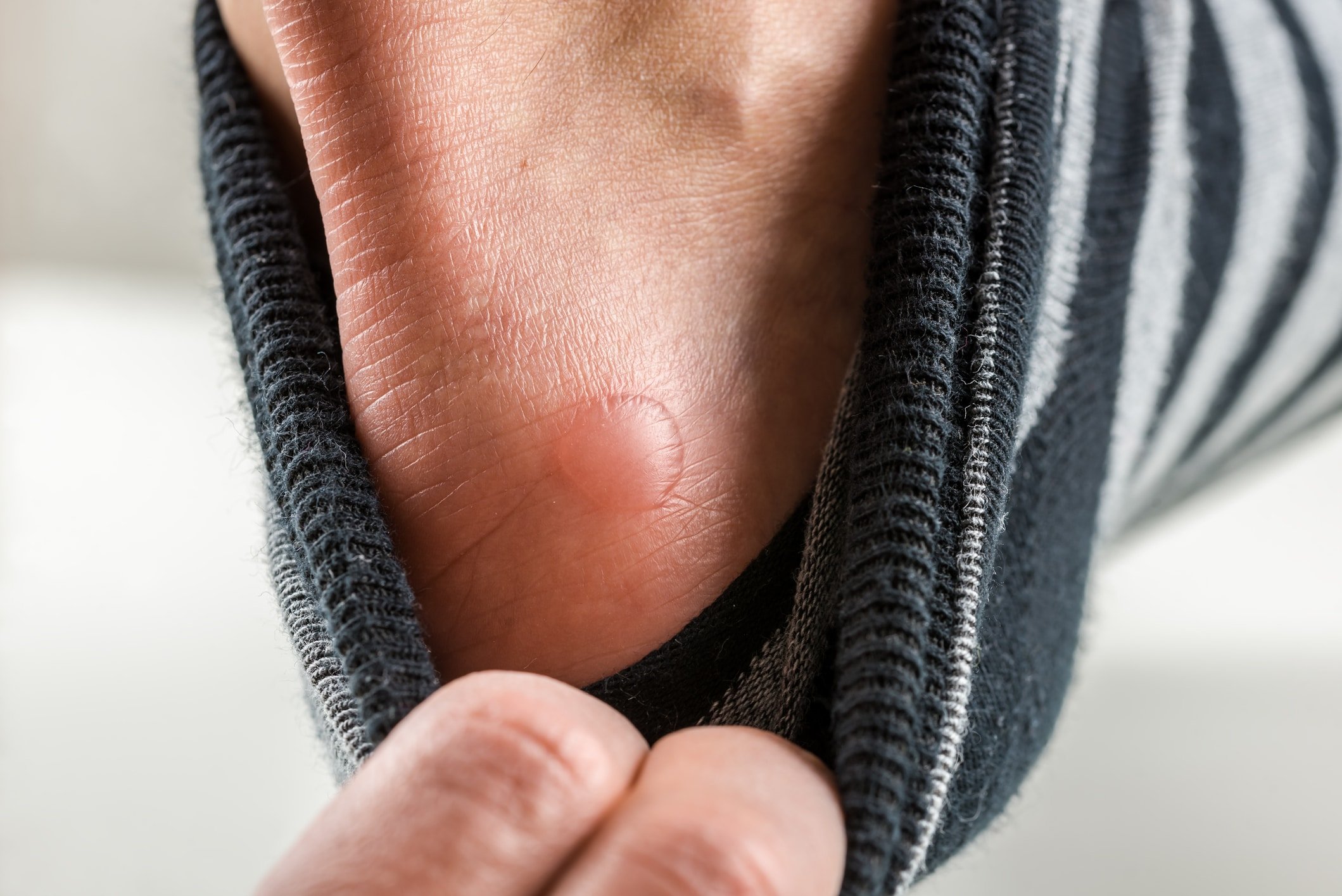
Summer is the time for walking around barefoot or in flip-flops or sandals. Maybe you love being outdoors in summer so much that you feel like walking all day long and walking to places where you would usually drive in less hospitable weather. This does a world of good to your health and to the health of the world. Unfortunately, it may also put you at risk for painful blisters on your feet.
Walking itself doesn’t raise blisters. It’s walking the wrong way or walking without giving your feet a rest. People also get blisters if they have to stand up for a long time. You can also get foot blisters from sunburn, allergies and diseases such as chicken pox.
What are Blisters Anyway?
A blister is a little bubble of skin that’s filled with some kind of bodily fluid. It can be lymph fluid, plasma, which is the liquid part of the blood that has clotting factors, blood or serum, which is plasma without clotting factors. Blisters can also be filled with pus, which are basically dead white blood cells that help fight off infection.
What Causes Painful Blisters On Your Feet?
One of the main causes of blisters on the feet are shoes that are too tight or too loose and rub constantly against your skin. They can also occur because the shoes are so tight that sweat clogs the pores of your feet. The result of this can also be blisters.
How Do You Treat a Blister?
Most blisters heal by themselves, so you don’t need to see a doctor unless you think that the blister is infected. Generally, you shouldn’t pop a blister. The exception to this are blisters that are very large and painful and might become worse if they’re not popped. Some doctors recommend bursting blood blisters as well. In order to pop a blister, the implements you use will need to be very clean. This includes your hands.
First, you need to sterilize a needle. All you need to do here is hold the needle in a fire until it glows red. You can also wash it with rubbing alcohol.
Wash your hands thoroughly then wash the area around the blister. Use the needle to punch a small hole in it, and allow the fluid to drain completely. If pus drains, it’s a sign of infection, so you should make an appointment with your doctor. Don’t pull off the skin over the blister, for it is protective. Put a dab of antibiotic cream over the blister, and cover it with a bandage. Change it every day or when it gets wet or dirty.
As the blister heals, keep watching for indications of an infection. You will see pus drain, red streaks running from the blister toward your heart or skin around the blister that is red, warm or increasingly painful to the touch. Notice if you have swollen lymph glands, chills or fever. Again, get in touch with the doctor if you see these signs. It’s also a good idea to see the doctor if you haven’t had a tetanus shot in about a decade.
Other Home Treatments
If the blister hasn’t popped on it’s own, put a bandage over it. If it’s at the bottom of your foot, put one of those donut dressings on it.
If the blister has popped by itself, perform the procedure described above, but don’t treat the wound with harsh chemicals such as alcohol, iodine or hydrogen peroxide.
Try not to wear shoes or walk around while the blister heals, but put on a thick sock to protect the blister.
Call Advanced Foot and Ankle Center
If you live in the Long Beach/Los Angeles/Palos Verdes area and are a bit worried about a blister on your foot, call the Advanced Foot and Ankle Center for a consultation. Podiatrist Dr. Pedram Aslmand is pleased to serve patients who suffer from foot problems. For more information call (562) 426-0376.
COVID-19 Toes Are Real And Here’s How You Can Identify Them
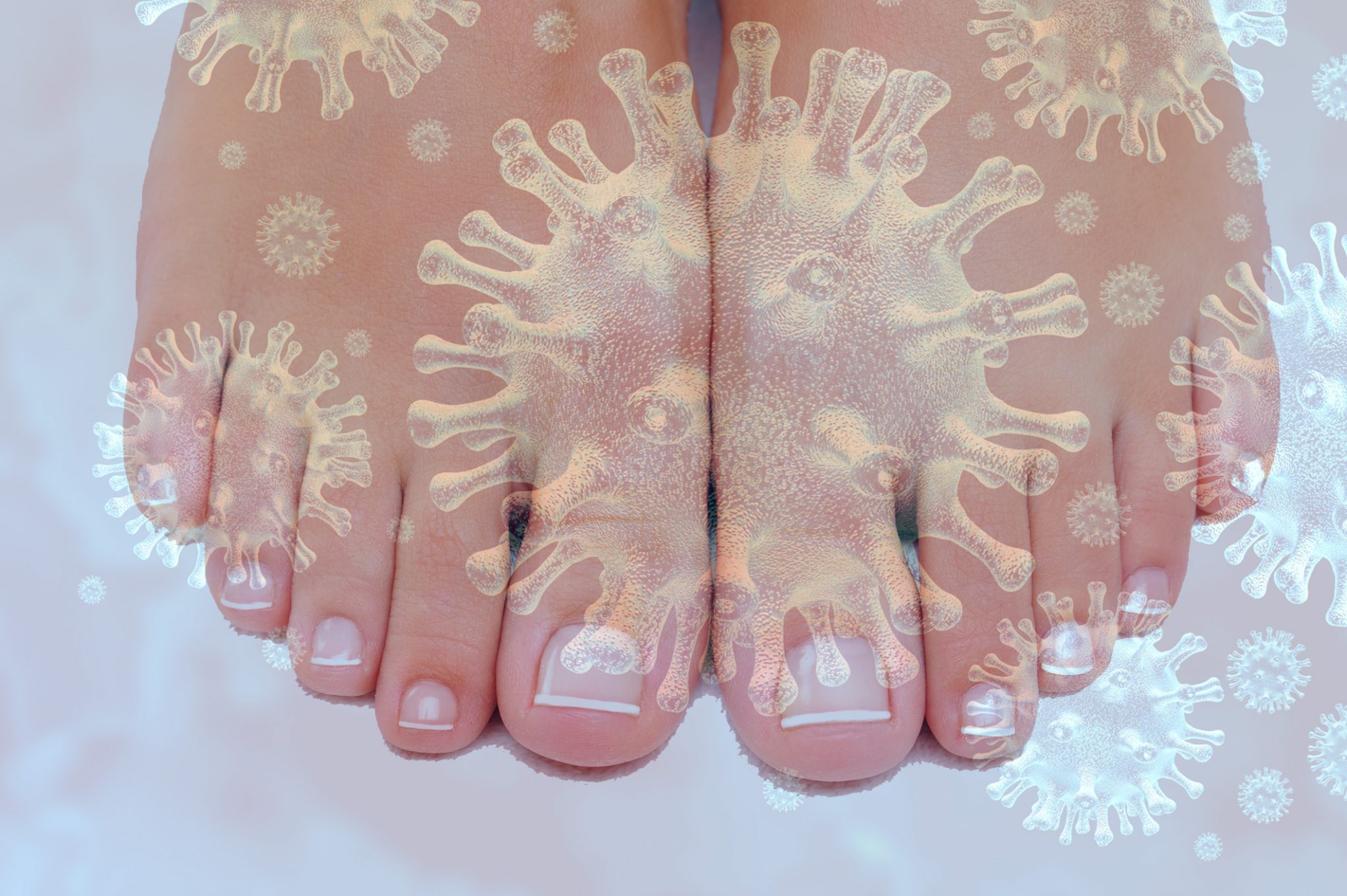
here has been a slew of coronavirus information circulating the internet. One of the most common things to see is information relating to the symptoms of COVID-19.
What Exactly Are “COVID Toes”
And that is not surprising. As more research is done, the medical field is learning more and more about how coronavirus manifests itself.
One of the most shocking things is the one can be infected and only see one minor symptom, such as a stomach ache, or, recently discovered, something called, “COVID toes”.
That’s right. Dr. Esther Freeman, a dermatologist at Massachusetts General Hospital in Boston, first diagnosed this skin condition as a symptom of coronavirus. The skin becomes a red or purple discoloration and may become raised or develop ulcerations. This not only appears on the feet but may affect the hands as well.
“Other skin symptoms have been shown to manifest in COVID-19 positive patients, but this seems to be “COVID-specific,” Dr. Lindy Fox, professor of dermatology at the University of California, San Francisco, explains.
Possible symptoms of “COVID toes”
- Skin that is hot, burning, or itchy.
- “Purple, red bumps/discoloration” on the tips of digits and pads, or on the tops of toes or sides of feet.
- Irritated, or raised skin with ulcerations.
While there is on-going research as to what is the cause of these symptoms, Freeman believes that one reason may be that there’s just a lot of overall inflammation caused by the virus.
Others think that it may also be due to blood vessel clots, which can occur in COVID-19 patients.
“If you notice discoloration on your feet or other hallmarks of COVID toes, contact a dermatologist and ask to be tested for COVID-19” Freeman recommends.
While there is not any particular cure for COVID toes at this time and there is no accurate data as to how many are being affected, it is important to stay vigilant and contact our office if in any way one thinks that they are experiencing COVID-19 symptoms.
The Difference Between an Ankle Strain and an Ankle Sprain
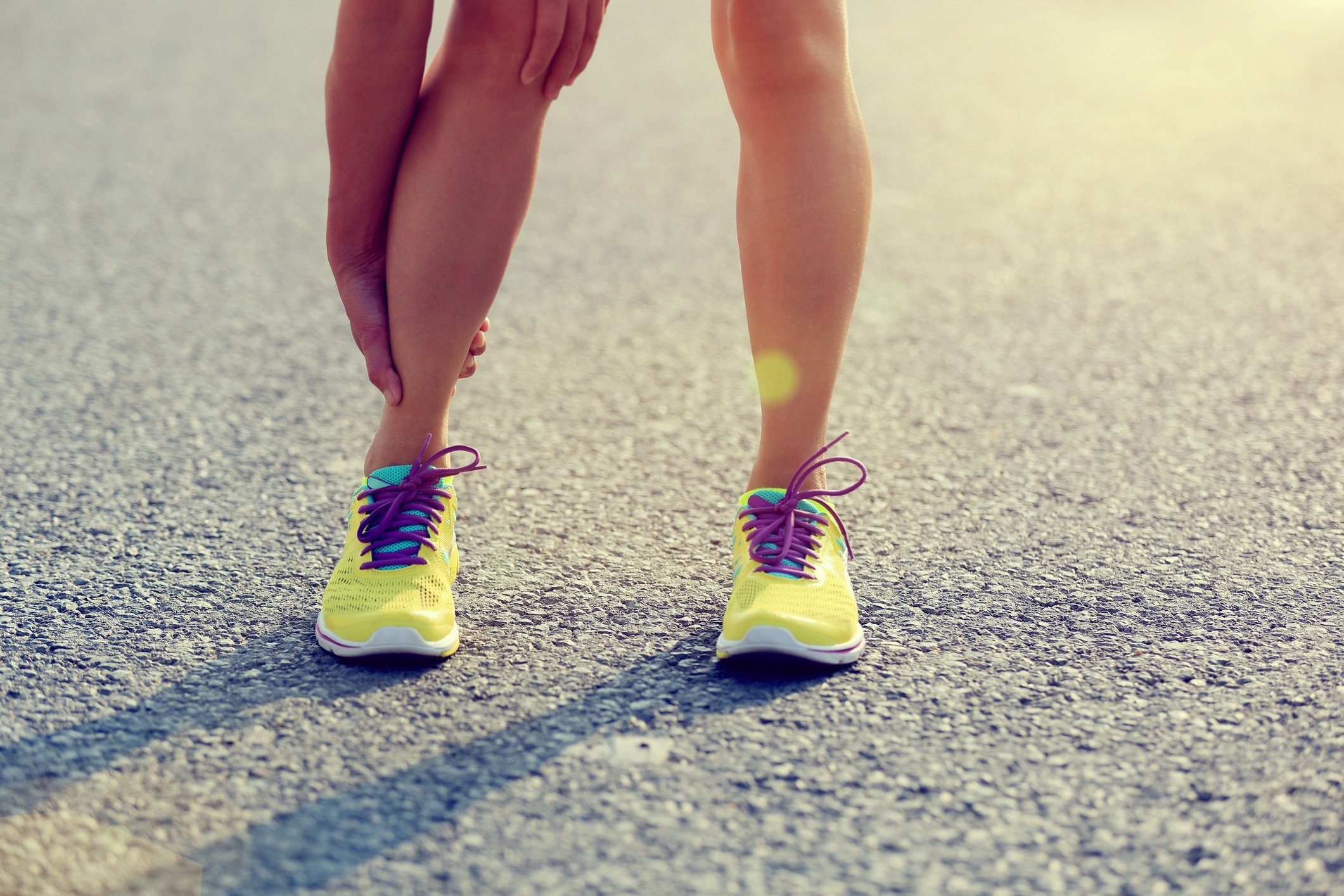
Ankle Surgery Long Beach
Strains and sprains are two common injuries your ankle may suffer. Whether due to a sports injury or simply your foot twisting off the sidewalk, both are painful and, when not properly taken care of, can linger for long periods of time. If you suffer any kind of ankle injury it is important to come in and have it looked into right away. While you may know when your ankle is broken, here are the differences between an ankle strain and an ankle sprain.
What is an Ankle Sprain
An ankle sprain is when the ligaments in your ankle either tear or stretch. Due to this, there are varying levels of a sprain. A sprain often sounds less painful or time-consuming than a break. However, if the ligament completely tears it will take time for it to mend.
The ligaments in question within the ankle are bands that connect the two bones of your ankle together.
What is an Ankle Strain
An ankle strain is a bit different from a sprain. The strain is a tearing of the tendon or muscles. A tendon is a cord of tissue that connects muscles to your bones. When a strain occurs on your ankle it’s usually right around the hamstring muscle on the back side of your thigh.
Treating Ankle Strains and Sprains
Much of the treatment with regards to a strain and sprain are the same. You’ll want to stay off of your foot, ice the injury, elevate it anyplace pressure on it. A mild can be treated without much in way of medical treatments. In this instance, it’s a stretch of the ligament and it just needs some time. When you see the doctor you may be given crutches to help keep weight off your foot, but for the most part, you don’t need to do anything else but wait.
Serious strains and sprains are different. In these instances, you may need a surgical procedure. Torn ligaments and separated muscles or tendons are not only painful but may prevent your ankle and muscles from functioning correctly. Additionally, the torn or separated tissue may fuse back onto the bone incorrectly, which will hinder movement permanently (unless it is surgically disconnected and attached in the correct location).
Common Symptoms
Symptoms of an ankle strain and sprain are similar, but if you know what to look out for you can tell the difference. You will suffer from pain and swelling with each injury (ice and pressure can help keep swelling down). In the event of a sprain, you’ll have very limited ability to move your joint. You might also hear a “pop” sound in your joint. In the event of a strain injury, you may suffer from muscle spasms after the injury. You’ll also find it difficult to move the affected muscle. So with a sprain, you might not be able to move your ankle, while with a strain you might not be able to flex your muscle.
It is extremely important to see a medical professional following any kind of ankle injury, so you know the extent of the problem and what needs to be done to correct it.
What Are the Treatments for Corns and Calluses?
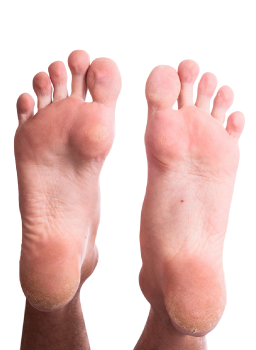
Even though calluses and corns do not really pose serious problems, they are still considered to be the most common foot conditions. They are known to build up as a form of response to the abnormal friction or pressure on the foot. It was actually estimated that eighty-seven percent o American adults have these foot problems.
As corns and calluses are known as patches of toughened skin, they continue to develop and protect the foot tissue against any repeated pressure and friction. In this article, you will learn more about the treatment options and home remedies that help alleviate the pain of calluses and corns. There are also suggestions for you to be able to prevent them.
Here are the following home remedies for you to consider:
Apple Cider Vinegar and Castor Oil
Just fill a basin with soapy and hot water and then add up an apple cider vinegar. You may now soak your feet in it and leave it for about fifteen minutes. You may also dab a castor oil for corns right after soaking your feet.
Vitamin A or E
Before bedtime, make use of a need in pricking a vitamin A or E capsule. Rub the oil right through your corn. After you have let it sit for a few minutes, you can put on your white cotton sock. Repeat this process until you have found out that the corn is already gone.
Lemon
Before you go to sleep, you need to cut a slice of lemon. Place its pith over your foot, specifically your corn. Secure with a form of bandage and cover it up with a cotton sock. Leave it overnight and continue until it has disappeared completely.
Onion
Just pour white vinegar on a glass container over a white onion. Leave it in a warmer and better place throughout the day. Cover the corn with the onion and then go to your bed. You may make use of a bandage tape or bandage for you to hold in its place. Continue repeating the treatment at night.
Aspirin
Crush 5 or 6 aspirin tablets and mix those equal parts with water and apple cider vinegar. Once you have already added enough in forming a paste, the next thing for you to do is to keep on rubbing it onto your callus or corn. Just the same, make use of a bandage for you to keep it in place.
Epsom Salts
Put Epsom salts right through the basin filled with warm water. Soak your feet and leave them for about ten minutes. Once the dead skin on your feet has softened, you may make use of a pumice stone or a callus file. Rub it off on the top layers of the skin. You need to be more patient in regard with this matter.
With the mentioned home remedies, it is still best to consult Corn Treatment Long Beach medical clinic that specializes in foot and ankle treatments. You need to get the recommendation from a specialist. This is necessary especially if the symptoms of your feet do not get better!
What is the Difference between an Ankle Sprain and a High Ankle Sprain?
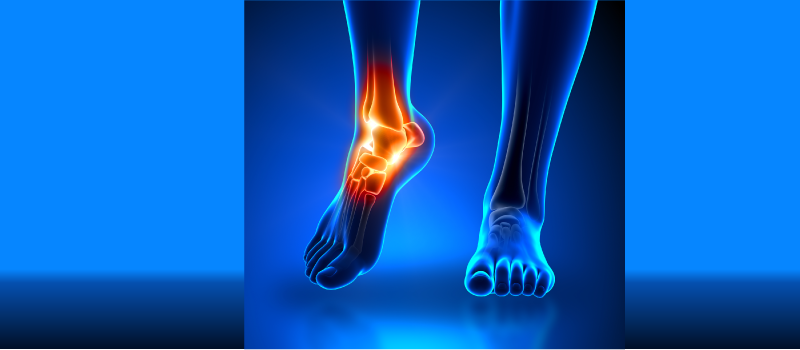
Ankle sprain is actually a common injury and is usually encountered by millions of people all over the United States. Nevertheless, what exactly is the difference between an ankle sprain and a high ankle sprain? A high ankle sprain is also usually experienced over a long period of time. The very reason is the anatomy of the ankle including the ligaments injured in an ankle sprain than a high ankle sprain.
An ankle is usually consisted of three bones found in the lower part of the leg: the fibula, the talus and the tibia. These usually work together in order to form the so-called ankle joint that sustains the loads and the body weight of a person. These soft tissues will surround the ankle and will permit it for its motion and stability. The ligaments also responsibly stabilize the ankle.
To further understand the difference between the two, read on below:
Ankle Sprain
An ankle sprain usually involves injury to the ligament which is usually found outside of the ankle. This is known as the ATFL or the anterior talofibular ligament. This is found between the endmost sections of the fibula down to the talus on the exterior part of the ankle. This acts as a stabilizer in the ankle and this is usually injured when one “rolls” the ankle.
Athletes who suffer from an ankle sprain will have swelling, bruising and pain in severe sprains. These are the symptoms that can be most experience on the outer area of the foot right below the ankle joint. There are times that there will be maximum tenderness felt in the single area. Even with the onset of these symptoms, other athletes still return to their sport activities at higher level. They just depend on ankle braces that really support the ankle and help prevent it from compensating due to the injured ligament and from “re-rolling”.
High Ankle Sprain
A high ankle sprain is usually felt when a set of ligaments are injured. This set of ligaments is known as the “syndesmosis” found on top of the ankle joint. This is also situated between the fibula and tibia and this holds the bones together.
In usual walking, the fibula and tibia are exposed to higher forces and spread the fibula and tibia apart. In this regard, the syndesmosis will act as an absorber between the fibular and tibia. Thus, this will help prevent the bones when it comes to splaying.
With periods of walking, that so-called syndesmosis will be exposed to higher forces. With cutting and running, higher forces will also be experienced. If ever it is sprained, each step will really prove to be painful.
The high ankle sprain does not cause bruising or swelling locally. This does not even look bad that makes it difficult for other people to understand its severity. Rehabilitation and rest are simply necessary in complete healing especially when one experiences high ankle sprain injury. There is not yet any bracing that can help prevent or treat the high ankle sprain.
Ways To Stay Active After Huring Your Achilles
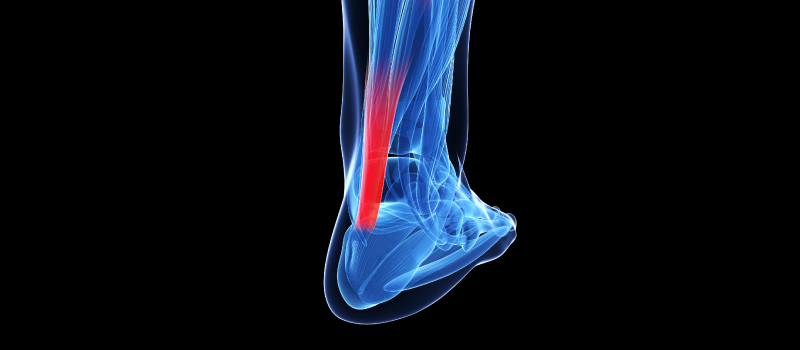
Ways To Stay Active After Tearing Your AchillesIt can be very painful and stressful to tear an achilles tendon. This can happen to people who are very active, who do sports or dance, and so it can be a challenge to stay active after this kind of injury occurs. For people who are struggling through the recovery process and still want to be able to exercise, we have gathered some activities with a torn achilles or achilles tendonitis that you can turn to.
Use Dumbbells
There is no reason you should not keep your upper body in shape as you recover from a tendon tear. You can do this sitting up in bed or in a chair, with dumbbells of any weight you are comfortable lifting. It is important to listen to your body, however, especially if you are taking pain medication, which can impact the way you exercise even your upper body. Dumbbell presses are a great way to work tough muscles in the arms so that you can even improve the way you look while still in the recovery process.
Swimming
If you are about six weeks into the recovery process, anther of the best activities to consider is swimming. This is not an option until six weeks have passed, but since being able to strenuously exercise will still be a few months away, you want to consider swimming.
Physical Therapy
After an injury of this kind, you will need to go do physical therapy to get your tendon working the way it should. This can be a great way to stay active without risking the recovery process. Ask the physical therapist to show you safe exercises to do yourself in order to maintain flexibility and strength as you recover. Of all the activities with a torn achilles that you can do, this is the safest and most effective.
Core Training
Core training can be done in a seated position and will not only keep you active as you recover, but it will strengthen your entire body so that when you heal you will be stronger than before. Things like simple waist rotations can be very beneficial to you and your core. You can also try bending to the sides to try and touch the floor, or Russian twists, which can be very effective in building abs and strengthening your core. Be sure to sit in a chair that is stable and will not move about while you exercise, and that you are not putting weight on your injured foot.
These are some of the best ways you can stay active even as you recover from a tendon injury. It can be a stressful and long process, but by doing these exercises you will be keeping yourself busy and ensuring that can get back to exercising once you recover. Be sure to listen carefully to your doctor and physical therapist to stay safe at all times and to take the medications that they provide. You will be able to get back to your regular exercises soon.

